Latinoargentina
By Rodrigo Alonso
Among the multiple factors contributing to the wealth and diversity of our culture, successive waves of immigration play an undeniable role. Argentina is a receptive country, with a policy of open arms to those who wish to inhabit its soil. For work or study, enamored with our ways of life or seeking a better one, numerous visitors settle daily in Argentine territory, contributing their efforts, knowledge, sensitivities, and idiosyncrasies.
In recent years, many artists have chosen Argentina as their home, forming a sort of underground scene that is little known. This scene is not yet very present in art galleries or official spaces, but it grows at the pace of intense local artistic activity, the interaction of newcomers with their colleagues, and the sense of belonging conferred by residence and everyday life.
This exhibition presents the work of a succinct selection of authors from various corners of Latin America. Without a specific theme, it celebrates their plastic and visual universes, their critical observations, and their imaginaries, as a guide to the expression of a possible "Latin-Argentinian" identity.
Interview to Rodrigo Alonso
Curatorship of the exhibition
What is the axis that articulates the exhibition?
The exhibition offers a panoramic view of the work of a group of Latin American artists residing in Buenos Aires. Without a defined thematic axis, through various expressions such as paintings, photographs, drawings, installations, and videos, the curatorial proposal revolves around celebrating their creativity.
What is the importance of this proposal?
In recent years, many artists have chosen Argentina as their home, forming a sort of underground scene that grows alongside the intense local artistic activity, the interaction with their colleagues, and the sense of belonging conferred by residence and everyday life. Fundamentally, it's an opportunity to discover their work and promote the idea that exchange always fosters moments of effervescence and renewal. Artists from other countries contribute to the growth and diversity of culture.
How does this selection link to the topic currently part of the international debate?
Diversity and some references to non-Argentinian imaginaries run through this selection, which seeks to be in tune with the international debate by proposing reinterpretations of certain topics. It's an exhibition open to the public. We hope it will have a good and significant impact on the Latin communities in Buenos Aires, but also on the fellow artists who know the exhibitors, and especially on the schools and universities that work and emphasize diversities. Also, on the broad sector of Latin American students living in Buenos Aires, the majority of whom attend public universities.
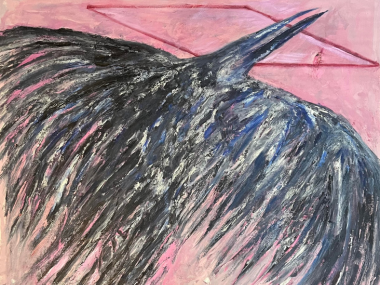 Bernab� Ar�valo. P�jaro volando sobre fondo rosa y diamante, 2021
Bernab� Ar�valo. P�jaro volando sobre fondo rosa y diamante, 2021
Bernabé Arévalo
Pájaro volando sobre fondo rosa y diamante, 2021
"This series of grackles; intelligent and abundant birds found throughout much of Central American and Mexican territory, for me, symbolizes blackness and mestizaje, the difficulty and confusion surrounding identity. This series or study insists on that point, on the relationship of the symbol in American painting."
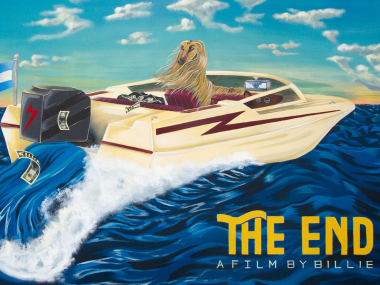 Virginia Bello. The End, 2022
Virginia Bello. The End, 2022
Virginia Bello
The End, 2022
"In an absurd key, 'The End' satirizes a scene from a Hollywood-style movie. Through humor, the artwork suggests a possible correlation between beginnings and endings, portraying the moment just before the conclusion of one story and the beginning of another that we still don't know."
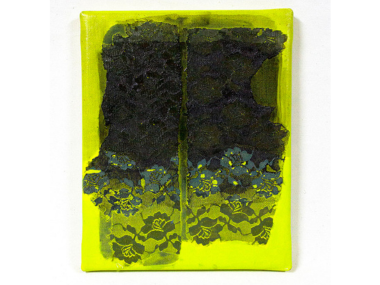 Karen Bendek. Los Acantilados, 2023
Karen Bendek. Los Acantilados, 2023
Karen Bendek
Los Acantilados, 2023
"Bodies and landscapes are spaces that impress me. These paintings are a way for me to let myself be found at a fixed point. A landscape looks at me, and this is the result of a displacement; here, I pause and ask myself questions. Just as the line travels from one point to another to establish a narrative based on its rhythms and forms, a body in motion also encodes information that, in this landscape, I am interested in exploring."
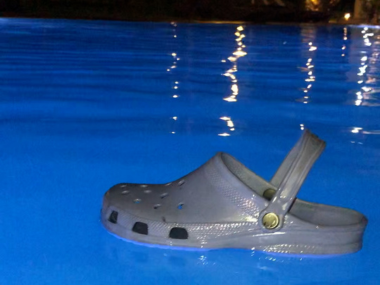 Emilio Bianchic. Titanic, 2023
Emilio Bianchic. Titanic, 2023
Emilio Bianchic
Titanic, 2023
"In the video 'Titanic,' several insects floating in a pool are removed from the water, one by one, by the artist. This action is part of a line of work on the fragility of non-human lives and the relationship between culture, media, and nature."
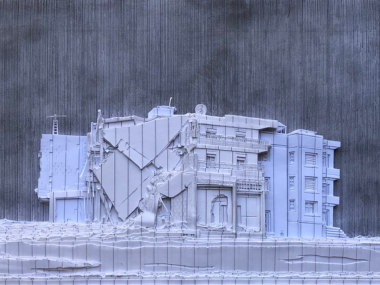 Sebasti�n Camacho. Paisaje 14, 2020
Sebasti�n Camacho. Paisaje 14, 2020
Sebastián Camacho
Paisaje 14, 2020
"The origin of the works is the photograph of an urban landscape which, using the sequence of pages from the book, I deconstruct and reconfigure in layers. The landscapes I start from are views from the window, sometimes real when they are places I inhabit, or virtual in the windows of a monitor. Thus, the landscape becomes the starting point and, at the same time, the place to arrive, redefining the image."
 Juli�n Le�n Camargo. Este amanecer de nosotros mismos por encima de la nada, 2018
Juli�n Le�n Camargo. Este amanecer de nosotros mismos por encima de la nada, 2018
Julián León Camargo
Este amanecer de nosotros mismos por encima de la nada, 2018
"This dawn of ourselves above nothingness belongs to a series of paintings titled 'Before the World,' which took inspiration from a letter by Paul Cezanne addressed to his friend Emile Zola, in which he poetically explained what painting meant to him. The phrase here appears avoiding the graphic nature of writing and strokes, emerging from the addition of layers, in the most 'Cezanne-like' manner possible: there is no drawing, only paint that paints texts about painting."
 Macidiano C�spedes. Coliseo de gallos Ninus 2010, 2018
Macidiano C�spedes. Coliseo de gallos Ninus 2010, 2018
 Coliseo de gallos "El Inti" 1978
Coliseo de gallos "El Inti" 1978
Macidiano Céspedes
Coliseo de gallos "El Inti" 1978, 2018
Coliseo de gallos “Ninus” 2010, 2018
"Looking at the past with admiration, memories, love, and a historical pain, this project is born, still in progress, with the idea of creating a documentation archive in the face of the possible extinction of the Cockfighting Coliseums in Peru. Peru's economic situation is changing, and animal welfare organizations are winning battles; therefore, these spaces of memory and folklore could be demolished for the construction of something more profitable or simply fall into the hands of the culture of oblivion."
 Alejandro Gonz�lez. El espacio vac�o de la experiencia, 2023
Alejandro Gonz�lez. El espacio vac�o de la experiencia, 2023
Alejandro González
El espacio vacío de la experiencia, 2023
"The empty space of experience proposes two different narratives. First, to understand the aesthetic experience constituted from that empty space between the artwork and the spectator, where a play of negations is established based on what remains permanently hidden in the artwork and is denied to the spectator, forcing them to generate different constructions of the artwork. And second, it refers to historical memory as a battlefield, as a device and agreed-upon space of coerced fictions and distorted constructions of the representation of the past."
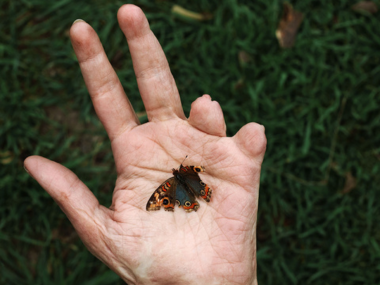 Kenny Lemes. Soltar, 2022
Kenny Lemes. Soltar, 2022
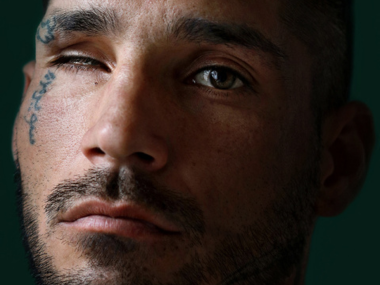 La cruz del Eros, 2022
La cruz del Eros, 2022
Kenny Lemes
Soltar como mecánica de fortaleza, 2022
La cruz del Eros, 2022
"My work explores and documents bodies and identities that develop on the margins, on the crisis borders of hegemony, proposing a sideways look at everything that is not necessarily good, moral, or beautiful and expanding the discussion on what it means to be human. I mainly use portraiture as a means to reflect on these disruptive aesthetics, trying to build a contemporary way to pinpoint small glimpses of beauty, subtle flashes of light that survive in the most unexpected places of harm, loneliness, and chaos."
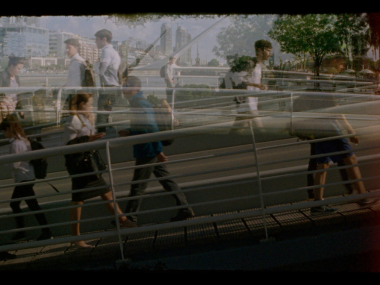 Azucena Losana. Cangallo y Canning, 2022
Azucena Losana. Cangallo y Canning, 2022
Azucena Losana
Cangallo y Canning, 2022
"Cangallo y Canning" is a film, a diary starring street workers and a president on the run in an imaginary corner of Buenos Aires, between two streets that never intersect and that are no longer called that."
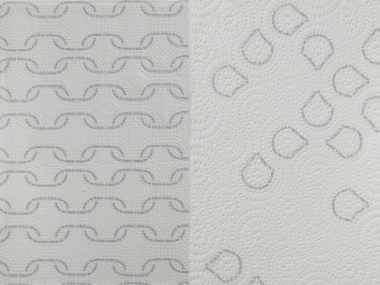 Tirco Matute. Definici�n simb�lica, 2023
Tirco Matute. Definici�n simb�lica, 2023
Tirco Matute
Definición simbólica, 2023
"Symbolic Definition" is a series of textual drawings printed in inkjet on absorbent paper napkins with different patterns and motifs that simulate concrete poetry, with phrases referring to the various readings and conceptions that can be attributed to the images. However, concrete poetry specifically designed each interlude, gap, or pause required by its prose. Here, that decision seems to be resigned to the manufactured and industrialized design by the various brands that produce rolls of kitchen paper, generating a dialogue between the random and arbitrary, while also noting the control of the situation in the realization of these pieces so that the textual drawing fits as precisely as possible between the embossing of the paper.
 Juliano Mazzuchini. Shadows, 2023
Juliano Mazzuchini. Shadows, 2023
Juliano Mazzuchini
Shadows, 2023
"My painting production is imbued with my training and experience in theater, as well as photography. I use photographs as a starting point, not only as a source of visual inspiration but also as a sketch and foundation for the development of my work. Additionally, I turn to acting as a tool for gestural exploration, where the body becomes the medium for my paintings."
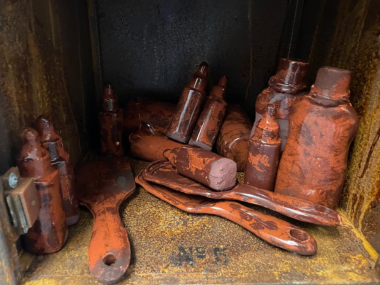 Carelyn Mej�as. Aparecer en el borde de su pelo, 2024
Carelyn Mej�as. Aparecer en el borde de su pelo, 2024
Carelyn Mejías
Aparecer en el borde de su pelo, 2024
"Appearing on the edge of her hair" is an installative piece of rusted iron, resembling a locker or container of object-archives reproduced in ceramic, which could be related to everyday caregiving tasks, bearing witness to the hierarchies that occur in the home and the construction of affections within it."
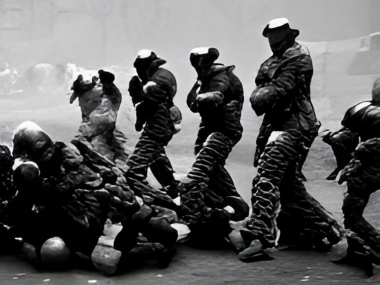 Mecha MIO. Archivo Represi�n, 2023
Mecha MIO. Archivo Represi�n, 2023
Mecha MIO
Archivo Represión, 2023
"Repression Archive" is a research project that reflects on the mechanisms of memory in the digital age using images of repression in Latin America, collected from social networks and processed with artificial intelligence. This collection is exposed to various artificial neural networks trained to recognize human faces and bodies, thus creating a new series of images along with a series of philosophical problems inherent to these current algorithmic processes."
 Yhomara Mu�oz. Kurmi Wasi IV, 2021
Yhomara Mu�oz. Kurmi Wasi IV, 2021
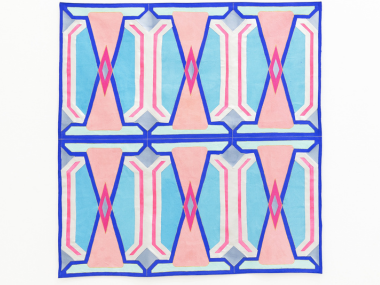 Texturas modulares, 2023
Texturas modulares, 2023
Yhomara Muñoz
Kurmi Wasi IV, 2021
Texturas modulares, 2023
"The artwork is part of a collection of ten digital illustrations inspired by the iconic cholets that stand majestically in the city of El Alto, Bolivia. The illustrated facade captures the essence of neo-Andean architecture, evoking the grandeur of these buildings by merging modern elements with the cultural heritage of the Aymara civilization. The cholets, with their bold shapes and bright colors, are a living testimony to ancestral creativity and engineering."
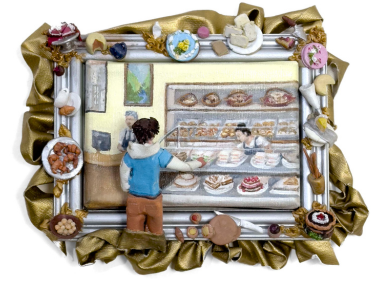 Guzm�n Paz. Panader�a, 2024
Guzm�n Paz. Panader�a, 2024
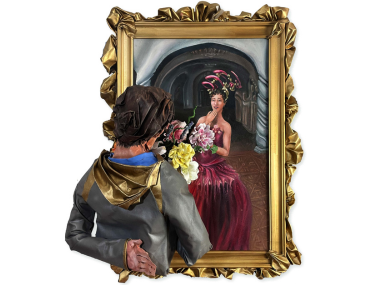 Ramo Sorpresa, 2023
Ramo Sorpresa, 2023
Guzmán Paz
Panadería, 2024
Ramo Sorpresa, 2023
"Surprise Bouquet" and "Bakery" are wall sculptures, paintings that materialize beyond the canvas, reinforcing their emotional aspect and creating a dynamism that makes them respond to a 'painting' in a more cinematic sense, like frames extracted from a light comedy."
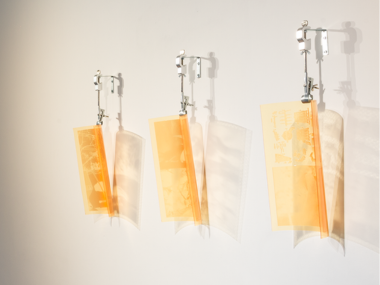 Paula Proa�o Mes�as. Estudios sobre la sodificaci�n zoofisiol�gica: Grecia, 2022
Paula Proa�o Mes�as. Estudios sobre la sodificaci�n zoofisiol�gica: Grecia, 2022
Paula Proaño Mesías
Estudios sobre la sodificación zoofisiológica: Grecia, 2022
"Studies on Zoophysiological Modification: Greece (2022) focuses on the study of industrial biomedical structures, such as prostheses for human hands and toucan beaks. The project alludes to Greece's reconstructive prosthesis (the toucan), the first bird to receive a beak prosthesis, and aims to sharpen our political scrutiny on technological evolution and its impact on interspecies relationships."
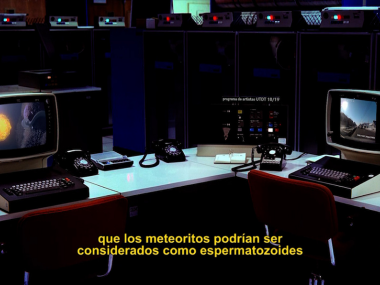 Rodrigo Alcon Quintanilha. Hay una constelaci�n hirviendo adentro de la piedra, 2019
Rodrigo Alcon Quintanilha. Hay una constelaci�n hirviendo adentro de la piedra, 2019
Rodrigo Alcon Quintanilha
Hay una constelación hirviendo adentro de la piedra, 2019
"Svante August Arrhenius first used the word 'panspermia' to refer to the origin of life outside our planet in 1908. According to this theory, meteorites could be a source of life on Earth. In 2016, an American company crafted a collection of firearms called Big Bang from Gibeon, a four-billion-year-old meteorite found in Namibia. Made from appropriations of images and texts, the piece questions the limits of neo-extractivism inherent to the Anthropocene and the legal voids inherent in the domain of outer space and its celestial bodies: How did Cabot acquire the meteorite? From whom? Who is its owner? Is Gibeon a heritage of humanity or universal?"
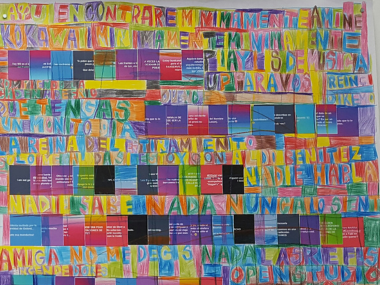 Dani Umpi. Aqu� encontrar� m�nimamente anim�, 2017
Dani Umpi. Aqu� encontrar� m�nimamente anim�, 2017
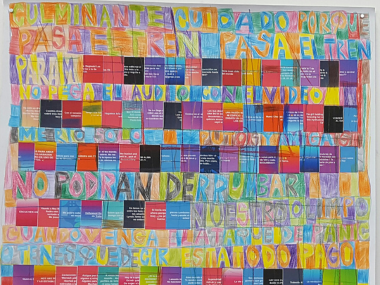 Culminante cuidado porque pasa el tren, 2017
Culminante cuidado porque pasa el tren, 2017
Dani Umpi
Aquí encontraré mínimamente animé, 2017
Culminante cuidado porque pasa el tren, 2017
"This diptych brings together a selection of screenshots of Facebook statuses. The colorful posts overlap and intertwine, making them difficult to read in a space that is already chaotic. This dynamic is further enhanced by loose and disjointed words traced and colored with pencils, resulting in works where color and shape compete, and fonts capture and challenge interpretation."
 Juan Carlos Urrutia. Archivos del desastre, 2017-2020
Juan Carlos Urrutia. Archivos del desastre, 2017-2020
Juan Carlos Urrutia
Archivos del desastre, 2017-2020
"Disaster Files" is an installation that positions itself interstitially between the margins of art and politics; a critical and reflective exercise that responds to the events that occurred in Venezuela during the year 2017, in light of the constitutional crisis that sparked intense protests across the entire national territory. It is presented as a spatial exploration that gives meaning to the vertex, a metaphor for the ideological context, enabling the convergence of its two lateralities in a dynamic flow of events and meaning.
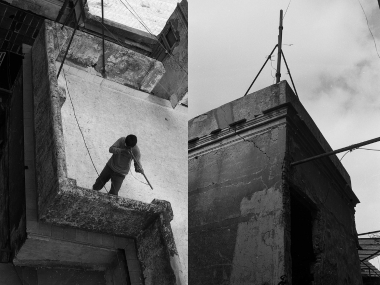 Pablo Vera Solari. Notas desde una guerra imaginaria, 2010-2024
Pablo Vera Solari. Notas desde una guerra imaginaria, 2010-2024
Pablo Vera Solari
Notas desde una guerra imaginaria, 2010-2024
"Between 2010 and 2014, I created a series of photographs titled 'Notes on an Imaginary War' about the history of a building that was inhabited by 30 families in La Boca and later forcibly evicted. The images reveal a dialogue between play and destruction, between dream and reality, exposing the vulnerability of a city at its core and its precarious housing situation. The complete series consists of 20 photographs, of which a selection of four is shown here."
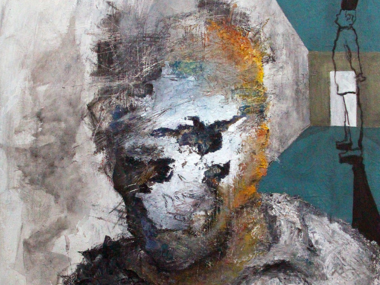 Piero Vicente. Post-perspectiva, 2019
Piero Vicente. Post-perspectiva, 2019
 Auto-retracto, 2018
Auto-retracto, 2018
Piero Vicente
Post-perspectiva, 2019
Auto-retracto, 2018
"Post-Perspective and Self-Portrait are a back-and-forth of painterly gestures, contrasting introspective and external perceptions. It's a recurring working intention where I often return to the essence of reflections on everyday life transmitted to artistic practice, a retrospective analysis approximating to the present and the future."